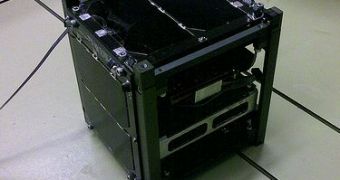Cube-shaped satellites will be developed and launched to low-Earth orbit, the UK Space Agency announced. These satellites are possibly smaller than a computer and they will allow scientists to develop and test the latest space technology at low costs and very rapidly, according to David Williams, UK Space Agency chief executive.
The British mini-satellite series are called CubeSats and they are very simple, small and cheap. They will allow engineers to test new technologies, before space agencies use them in real risky missions. The UK's minister of state for universities and science, David Willetts said that “Britain's first CubeSat will bring major benefits to the UK space industry. Firms will now have a cheap and quick way to test their latest prototypes.”
Craig Clark, Clyde Space CEO said that “ As with all space related business, the best way to market space products is through their successful demonstration in orbit.”
The UK's Space Agency hopes the CubeSat mission will inspire students. UK Space Agency head of education Jeremy Curtis said that “[CubeSats] can easily be taken to schools and students can be engaged before and after launch, including anything from mission ideas, hands on development, operations and data analysis. They are a great way to attract and train a future generation of engineers.”
The British model is called UKube 1. The space agency has opened a competition to students and private industry companies, in order to gather the most innovative ideas for a payload. The best proposal will launch next year, in a CubeSat designed and made by the Glasgow, Scotland-based company Clyde Space Ltd.
In a past CubeSat mission, NASA sent bacteria inside a miniature lab to see the way that spaceflight affects the human body. Another CubeSat experiment, the NASA Firefly project, is studying the link between gamma-ray radiation flashes in the Earth's upper atmosphere and lightning, SPACE.com relates.
CubeSats could be used for studying space weather, atmospheric science, spacecraft damage, as well as high energy particle radiation. As they would orbit the Earth at a relative high speed, they could also furnish data on bush-fires or tsunamis and also create real-time maps of the planet.

 14 DAY TRIAL //
14 DAY TRIAL //